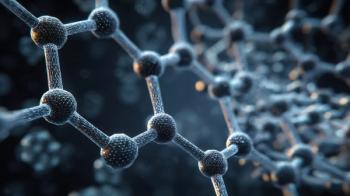
A Novel LC–QTOF-MS DIA Method for Pesticide Quantification and Screening in Agricultural Waters
Scientists from the University of Santiago de Compostela developed a liquid chromatography quadrupole time-of-flight mass spectrometry (LC–QTOF-MS) operated in data-independent acquisition (DIA) mode for pesticide quantification in agriculturally impacted waters.
As agricultural practices continue to apply pesticides at scale, evaluating their presence—and that of their transformation products—in surface water (SW) and groundwater (GW) remains a key environmental monitoring challenge. In response, a team from the University of Santiago de Compostela put together a performance assessment of liquid chromatography quadrupole time-of-flight mass spectrometry (LC–QTOF-MS) operated in data-independent acquisition (DIA) mode that aimed to deliver both target quantification and suspect screening from a single chromatographic run. The study was published in Journal of Chromatography A (1).
Pesticides are used extensively in farming worldwide; the benefits include helping farmers to grow more food by killing the pests, weeds, and diseases that can ravage crops (2,3). However, if pesticides reach the watercourse, they can pose serious risks to our water supplies, impacting human, animal, and aquatic life. The term pesticide covers a huge range of compounds, but this study focused on fungicides and insecticides commonly used in viticulture, where pesticide application is typically high and sustained.
The team sought to evaluate the utility of LC-QTOF-MS DIA, which generates MS/MS-like spectra for all ions across the chromatographic range without precursor selection, combined with an online solid-phase extraction (SPE) step. The DIA method was tested using a selection of pesticides in both SW and GW. These matrices were chosen due to their differing exposure mechanisms—while SW is directly impacted by agricultural runoff, GW can become contaminated through soil leaching, particularly by mobile and persistent compounds with groundwater ubiquity scores (GUS) above 2.8. A comprehensive product ion spectral library of more than 700 pesticides was used to match detected features to known or suspected compounds. For spiked water samples at concentrations ≥50 ng/L, the identification rate exceeded 90%, improving on the conventional data-dependent acquisition (DDA) workflows under similar conditions (1).
The method achieved limits of quantification (LOQs) between 2 ng/L and 25 ng/L for 44 pesticides, with linearity observed up to 500 ng/L. Accuracy, evaluated using ultrapure water calibration standards, remained within the standard 70–120% range. Quantification was achieved using both retention time and MS1 exact mass, supplemented with qualifier ions from the DIA-generated pseudo-MS/MS spectra.
Even in the absence of retention time data, the system was able to assign candidate structures based on accurate mass and fragmentation pattern matches. However, in cases where analytes shared empirical formulas and overlapping product ions, the authors noted that further improvements in data mining software are necessary to refine compound prioritization based on fragment specificity and match confidence (1). Additionally, method applicability must be reassessed as new pesticides and transformation products are introduced to the market.
As demands continue to grow and evolve, a consolidated workflow such as this can help to deliver low ng/L quantification, enable retrospective data exploration, and maximize instrument utilization. The study has demonstrated that LC–QTOF-MS operated in DIA mode, when properly optimized and combined with online SPE, can provide good quantitative reliability for pesticide monitoring in water.
References
(1) Fernández-Fernández, V.; Castro, G.; Ramil, M.; Rodríguez, I. Assessment of LC-QTOF-MS Data Independent Acquisition for Quantification and Suspect Screening of Pesticides in Agriculture Impacted Water Samples. J. Chrom. A 2025, 1751, 465957. DOI: 10.1016/j.chroma.2025.465957
(2) Importance & Benefits of Pesticides. Pesticide Facts.
(3) Aktar, M. W.; Sengupta, D.; Chowdhury, A. Impact of Pesticides Use in Agriculture: Their Benefits and Hazards. Interdiscip. Toxicol. 2009, 2, 1–12. DOI: 10.2478/v10102-009-0001-7
Newsletter
Join the global community of analytical scientists who trust LCGC for insights on the latest techniques, trends, and expert solutions in chromatography.




